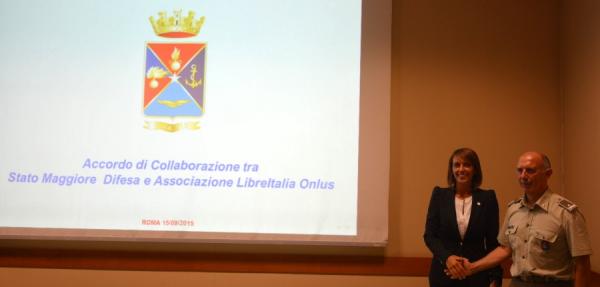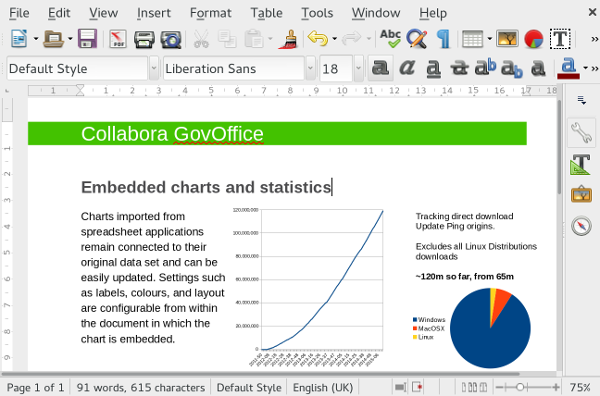The Italian military is moving to LibreOffice and Open Document Format (ODF), according to Joinup, the EU’s public sector open source news website. This will be Europe’s second largest migration to a free and open source office suite and open standards since the Italian Defence Ministry will be installing LibreOffice on 150,000 machines.

The migration will begin in October 2015 and is expected to be completed at the end of 2016.
The deployment of LibreOffice will be jointly managed by Libreitalia and the Italian Defence Ministry, with the former providing trainers and the Ministry devising course materials, which will later be released under a Creative Commons licence.
An agreement between the Ministry and LibreItalia was signed on 15th September in Rome by Rear Admiral Ruggiero Di Biase, General Manager of the Italian Ministry of Defence’s Information Systems and LibreItalia president Sonia Montegiove.

The Ministry of Defence is the first Italian central government organisation to migrate to open source software for office productivity. On the other hand, many regional public sector organisations have already made this move, such as the Emilia-Romagna region, the provinces of Perugia, Cremona, Macerata, Bolzano and Trento, the cities of Bologna, Piacenza and Reggio Emilia, the Galliera Hospital in Genoa and healthcare ASL 5 in Veneto, to name but a few.
The Italian Defence Ministry project is also one of Europe’s largest migrations to date to a free and open source office suite. The largest European public sector organisation using free software office suites is currently the French Interior Ministry with some 240,000 desktops. Many French ministries use open source office suites including the Tax Agency, the Finance Ministry, the Ministry of Foreign Affairs and the Ministry of Agriculture. LibreOffice is deployed on some 72,000 PCs within the French Gendarmerie, which also uses Ubuntu Linux as its operating system of choice.
In June 2014, the autonomous regional government of Extremadura (Spain) confirmed that 10,000 PCs in its healthcare organisation are running open source office applications and that the same is planned for its own 22,000 PCs. In Germany the city of Munich runs also runs LibreOffice on over 17,000 Linux workstations.








 ODF defines a technical schema for office documents including text documents, spreadsheets, charts and graphical documents like drawings or presentations.
ODF defines a technical schema for office documents including text documents, spreadsheets, charts and graphical documents like drawings or presentations.